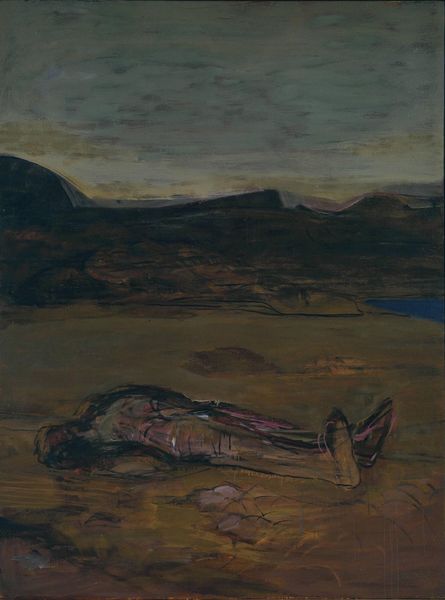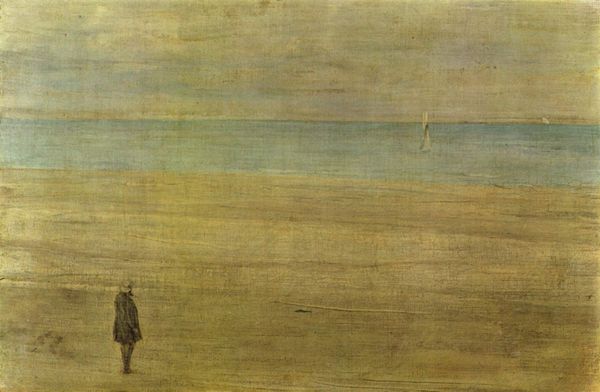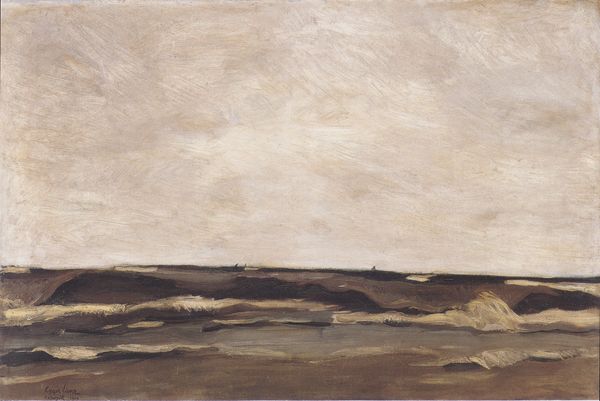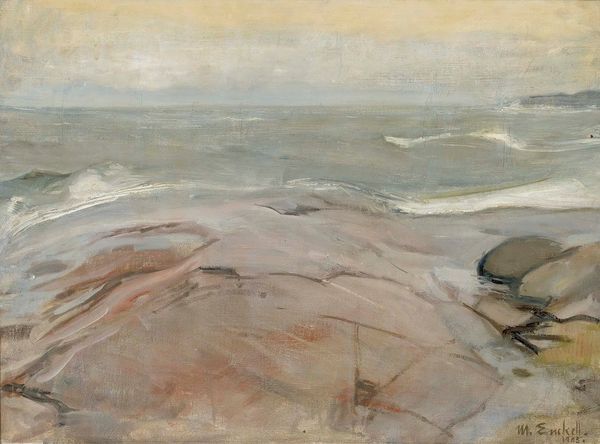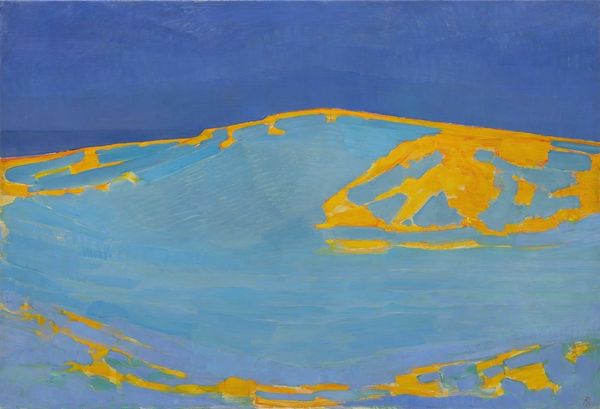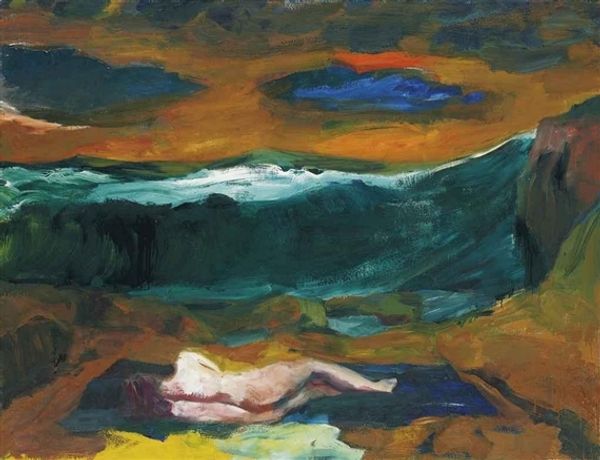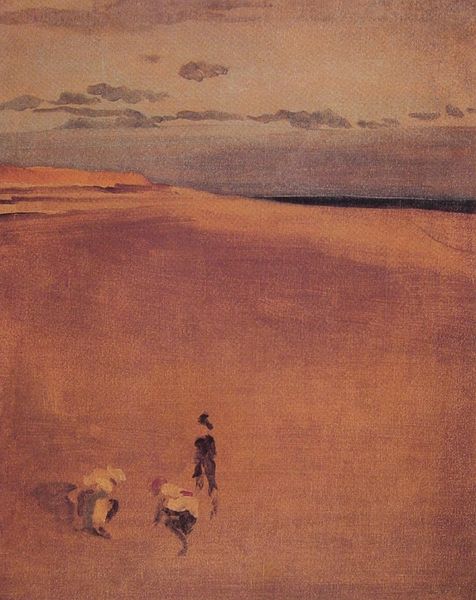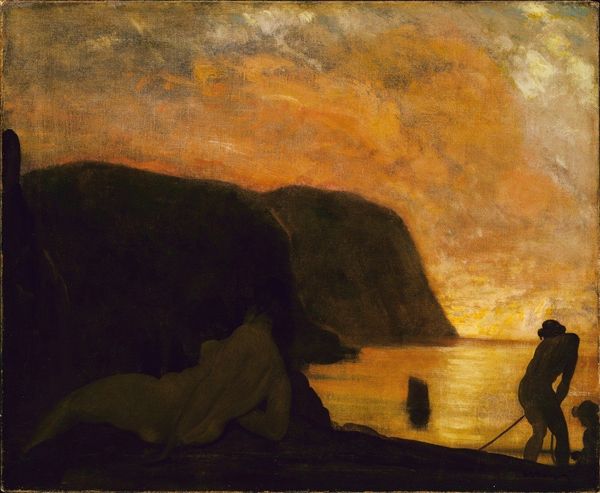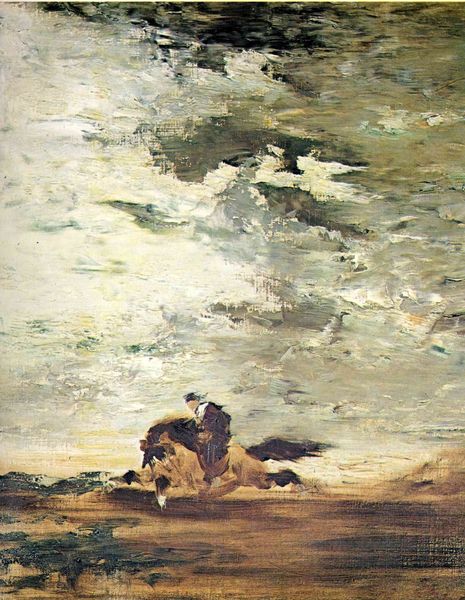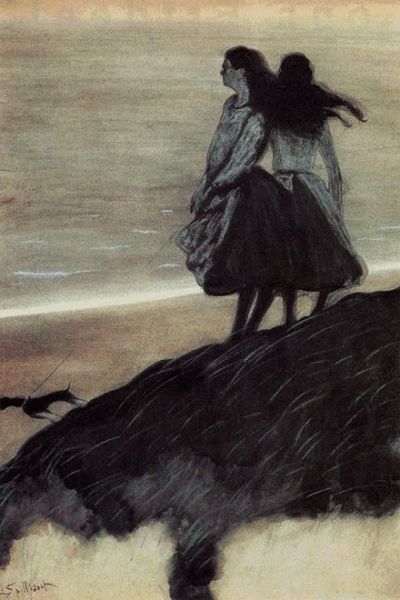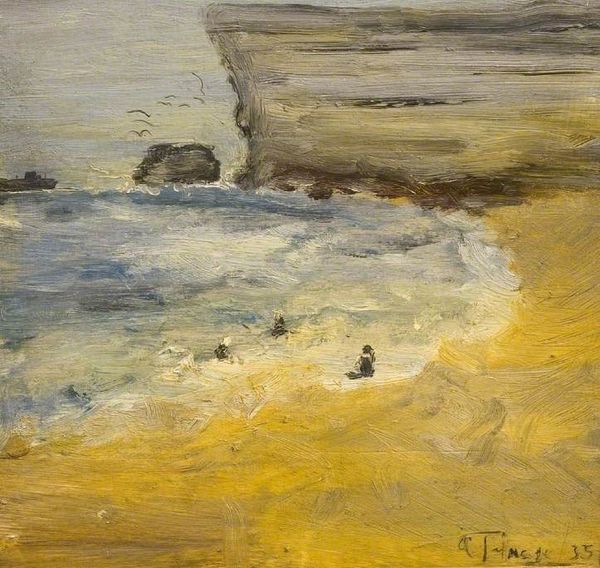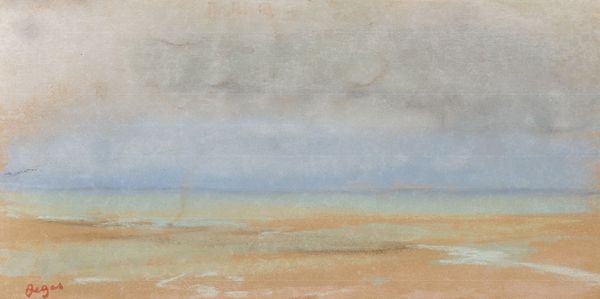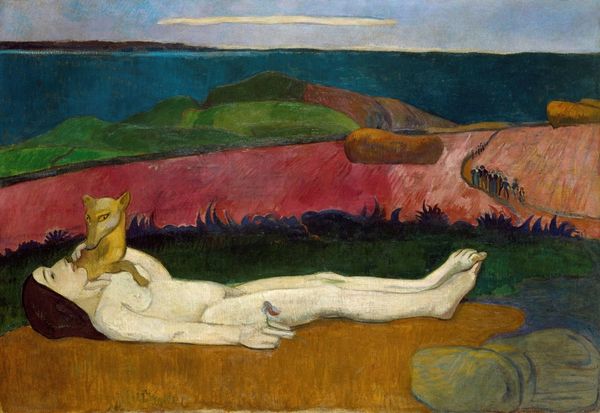
Dimensions: support: 1977 x 1523 mm
Copyright: © The Estate of Karl Weschke | CC-BY-NC-ND 4.0 DEED, Photo: Tate
Curator: Today, we're considering Karl Weschke's imposing work, "Feeding Dog," housed here at the Tate. Weschke, born in 1925, offers a stark composition, rich with symbolic potential. Editor: It feels bleak, doesn't it? Like a lonely vigil. The dog's posture is so…vulnerable. It also somehow feels familiar, yet unsettling. The vast beach, the muted colours…it all speaks of isolation. Curator: Indeed. Weschke often explored themes of alienation and the human condition within post-war contexts. The dog, in this sense, could be interpreted as a symbol of loyalty and survival in a desolate landscape. Editor: Or maybe it's about the absurdity of existence. The dog is just doing what dogs do, searching for sustenance. But there’s this weight of the world bearing down, amplified by the colours. Curator: Weschke’s strategic use of muted tones, and the dog's positioning in such a sparse environment, evokes a sense of melancholy, reflecting the pervading sense of societal unease. It resonates profoundly even today. Editor: Yes, and I keep coming back to that small red spot near the dog. Is it blood? Is it the offering? It’s so raw. Well, it certainly stays with you. Curator: It's a potent visual, capturing humanity’s persistent struggles within a seemingly indifferent world.
Comments
Join the conversation
Join millions of artists and users on Artera today and experience the ultimate creative platform.
tate 5 months ago
⋮
Whether his subject was mythological or autobiographical, Weschke frequently depicted animals in his paintings. In the 1960s and 1970s, he made a number of paintings of horses and dogs. This one show the artist's own dog, a Borzoi called Dankoff, standing astride a piece of meat as if guarding it. Weschke described the picture as 'a dog in a particular landscape in a given circumstance' but observed that because of his singular appearance, this dog had taken on a symbolic role for him, evoking strong memories of particular events in his childhood. Here Dankoff is seen on the cliff by the artist's house at Cape Cornwall. The barren landscape reinforces a feeling of defensiveness and isolation. Gallery label, March 2024
